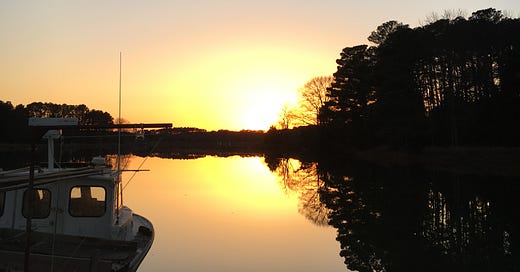This isn’t a story. I haven’t found my way back to those yet. This is me, still wrestling with the world. I keep hearing it is in crisis, broken, beyond repair. Evidence certainly supports that theory, but I can’t stop thinking about what thinking that is doing to us. I keep wondering if there is any way to heal.
Even at the most basic level, when we incur a physical injury, healing is affected by a multitude of variables. Ideally, the body jumps into action moments after the damage occurs. If there is bleeding, platelets clump together, creating a clot, a barrier to keep dangerous matter out and blood in. Next, red and white blood cells collaborate with oxygen and collagen to fend off infection and promote tissue repair. Over time, the wound resolves and the person goes on, more or less, with living.
Sometimes the process requires buttressing – medication, surgery, physical therapy – but the body’s ability to counter the attack is foundational to recovery. And, it is in that fox hole that Pandora’s box sits, at risk of being blown open. How extensive was the damage? Which uninvited guests found their way in before the defense mechanisms could close the door? What resources does the body have to support the effort? Have its armies been depleted from years of fighting other battles?
There is too much to know, too much we can’t know, and we haven’t yet even ventured beyond physical healing. When we try to also address emotional injuries, we’re in free fall. The gulf between lived experience and research appears bottomless. This is no man’s land, rich with possibility but also terrifying to quantify. We grasp, intuitively if not empirically, that the shape of our future is a byproduct of a Daedalian mix of our environment, our personality, and events that are often beyond our control. We are just beginning to appreciate that trauma leaves a legacy, that our ancestors’ pain can also become ours. But determining which ingredients yield which results is spaghetti-on-the-fridge territory. We can lob loads of noodles to see what sticks, but no matter how much we chuck, the supply of pasta always appears to come back to the same level.
I am frustrated by essays and articles that focus on societal problems with no attempt to offer solutions. I also notice that the more I personalize a plan, the more success I have with maintaining it. If you want a sensitive, professional dive into the subject, give yourself the gift of an hour to listen to this podcast episode on trauma, resilience and healing, in which researcher and author Brené Brown talks with Oprah Winfrey and Dr. Bruce D. Perry. Ten out of ten would recommend!
I’m not performing at their level just yet (insert guffaw), but I’ve come up with four steps that are helping me work toward a state of being that feels less like spinning out of control. It’s worth noting that these were cultivated for personal healing, but they can also guide that process in our interactions with others.
Ask and allow: As with triage for bodily injuries, the exploration of emotional catastrophes begins by seeking information. What is the anatomy of the pain? How did it come into being? How long ago did it begin? Is there continued or immediate danger? Before I try to understand my own emotions, I need to acknowledge what they are and work to find out what they’re made of. Then, I need to allow them to exist just as they are, without judgement and without masks that try to turn them into something else.
See and be seen: There’s no substitute for genuine connection. I have to put myself out there. My real self. It makes me squirmy. I’m an introvert posing as an extrovert. I twist toward texts and emails like sunflowers to sunlight, because they give me what I need - information without the energy required of interaction. But, I know I am more likely to appreciate the nuances of someone’s life when I’ve been with them in person. When I compel myself to show up in community, to see and be seen, the experience itself becomes a connector. Put more simply, it’s harder to disfavor someone I’ve taken time to get to know.
Find a new fit: It’s not me. Say it again, with feeling: IT’S NOT ME! Those defensive, fearful, angry, addictive, ass-hat behaviors? That’s pain and misunderstanding acting out. That’s the ugly, ripped hoodie I slip on because it’s always right there, within arm’s reach. It feels comfortable, familiar, I recognize myself in it even if it is unflattering. It’s time for a new fit, friends, time to cuddle up to a better outcome that starts with creating space between my self-worth and the rest of life’s crap. If I don’t show up for myself, how can anyone else?
Believe: I’ve known about the placebo effect for decades, but I learned only recently that people experience similar positive outcomes even when they know they’re taking a placebo! In both instances, the genesis for healing is a belief that healing is possible. It comes from what’s called conscious conditioning. I get what I expect to get. Can I bring myself to trust that change is possible? Can any of us? I hope so, because I believe that is what’s missing from our world-in-crisis conversations right now.
I take it back. This is a story. It’s the tale of how to make mindful micro-adjustments to my course. It’s the account of how a committed crew purposefully guides its ship to a different destination. The ending isn’t certain yet, thank goodness, and I think I see a river of willing writers out there ready to get it down just right.
~Elizabeth





I love me a checklist! This is wonderful, and so are you.
beautiful. love those 4 doable steps